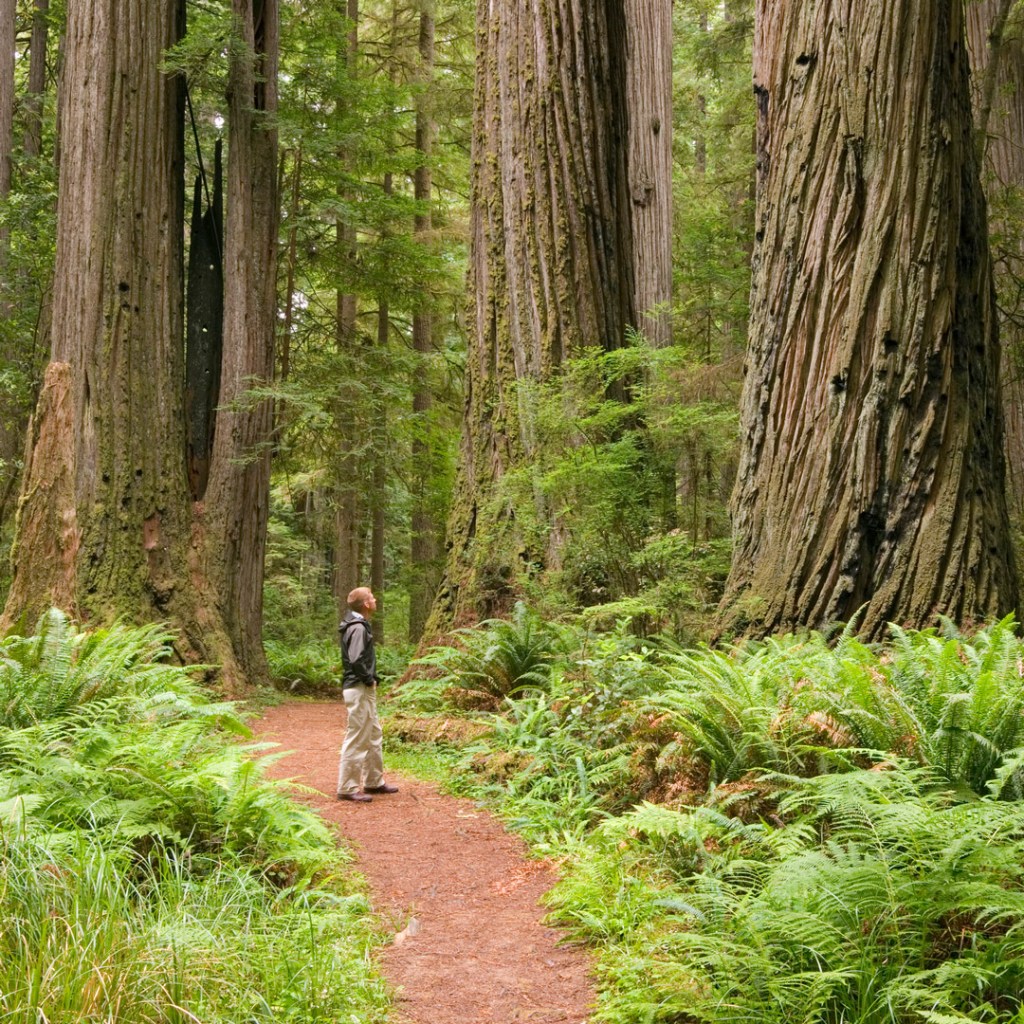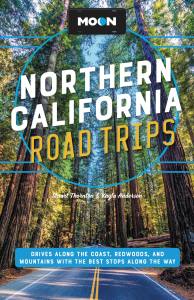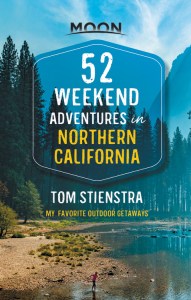Pacific Coast Road Trip: Visiting Redwood National Park

If your Pacific Coast road trip takes you to northern California, chances are good you’ll pass through Redwoods National Park, which is a great place to stop and stretch your legs in one of the world’s most incredible forests.
Twenty million years ago, these colossal giants thrived in the cool, continuously damp environment found only on the northernmost coast of what is today California. Those conditions haven’t changed, and the colossal giants are still here. Nobody really knows why these trees grow to such towering heights, and it may be this mystery, along with the area’s magnificent beauty, that draws more than 400,000 people each year to Redwood National and State Parks. At one time, close to two million acres of old-growth redwoods blanketed California’s northern coast. Alas, massive logging left little more than 45 percent of the area’s old-growth coast redwoods, half of which is found in the Redwood National and State Parks system.
In 1968, Redwood National Park was established to protect some 131,983 acres of redwood forest, of which 60,268 acres make up the adjacent Smith, Del Norte, and Prairie Creek State Parks. The trees preserved in the Redwood National Park section are not the oldest; they’re second- or third-growth timber. However, these reddish-brown beauties still possess a magical sway that inspires awe among visitors.
Visiting Redwood National Park
Spanning a length of 50 miles from the Oregon border to the north and the Redwood Creek watershed near Orick, California, to the south, Redwood National Park is located on the northernmost coast of California. The cool, moist air created by the Pacific Ocean maintains the trees’ moist habitat even during summer droughts.
Seasons
Redwoods National Park is always open, welcoming visitors year-round. Visitors to the park should be prepared for all types of weather by dressing in layers to accommodate climate changes. Wear durable walking shoes or hiking boots with grip soles to avoid slipping on moist trails, logs, or rocks. Good rain gear and a water bottle are imperative.
Temperatures stay between the mid-40s to low-60s (Fahrenheit) with cooler, sometimes snowy winters. Warmer months bring moist fog that collects where the cold ocean and dry land meet, creating a damper interior. Rain averages 60-80 inches annually, with October-April as the rainier months. However, weather and climate cannot always be predicted.
The best time of year for hiking and outdoor activities is in summer. Cooler months (Dec.-Jan. and Mar.-Apr.) offer favorable opportunities to see migrating gray whales along the coast.
Weather can cause changes in both campground and trail access. Check for revised schedules before arrival.
Fog and strong winds can create difficult driving conditions and road closures. Check for updated highway reports with the California Department of Transportation.
Newsletter Signup
By clicking ‘Sign Up,’ I acknowledge that I have read and agree to Hachette Book Group’s Privacy Policy and Terms of Use
Park Entrances
Many visitors are surprised to discover that there are no formal entrance stations, or even entrance fees at Redwood National Park. In fact, US-101 (known in these parts as the Redwood Highway) runs the entire length of the park.
Visitors Centers
There are two information centers and three visitors centers. The northernmost, Crescent City Information Center (1111 2nd St., 707/465-7335, 9am-5pm daily spring-fall, 9am-4pm daily winter) provides an array of useful materials, including maps and brochures, and has several great exhibits and live video feeds from the Castle Rock National Wildlife Refuge.
Less than 10 miles northeast of Crescent City, Hiouchi Information Center (US-199, 707/458-3294, 9am-5pm summer) operates only in the summer with ranger-led activities, exhibits, and public facilities.
The southernmost facility is the Thomas H. Kuchel Visitor Center (US-101, 707/465-7765, 9am-5pm spring-fall, 9am-4pm winter), which includes public facilities, as well as information, exhibits, beach access, and a bookstore.
All centers provide National Park passport stamps.
Permits and Regulations
There are no entrance fees for Redwood National Park. However, a $5 day-use fee is charged at the three adjoining state parks: Prairie Creek Redwoods State Park, Del Norte Coast Redwoods State Park, and Jedediah Smith Redwoods State Park.
A free permit for backcountry camping is required and is only available year-round from the Crescent City Information Center and Thomas H. Kuchel Visitor Center, and seasonally from Hiouchi Information Center.
A free permit is also required for “Tall Trees” access road and can be obtained at the Thomas H. Kuchel Visitor Center and Hiouchi Information Center (summer only). Please note that these permits are limited to only 50 per day and are on a first-come, first-served basis.
Special-use permits may be required for group events, commercial activities, and research projects. An application must be completed (call 707/465-7307 for more information).
Newsletter Signup
By clicking ‘Sign Up,’ I acknowledge that I have read and agree to Hachette Book Group’s Privacy Policy and Terms of Use
Pin it for Later



